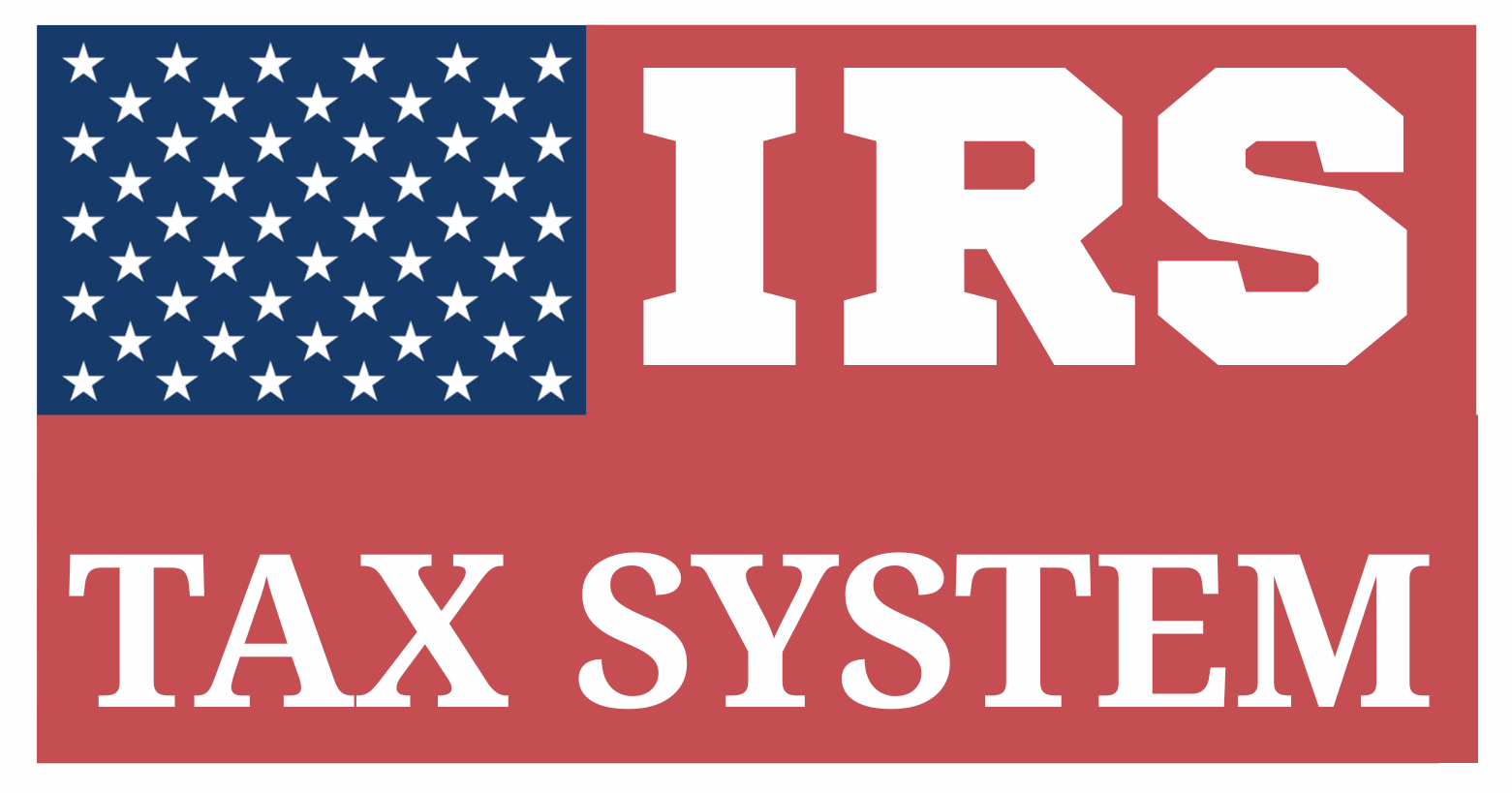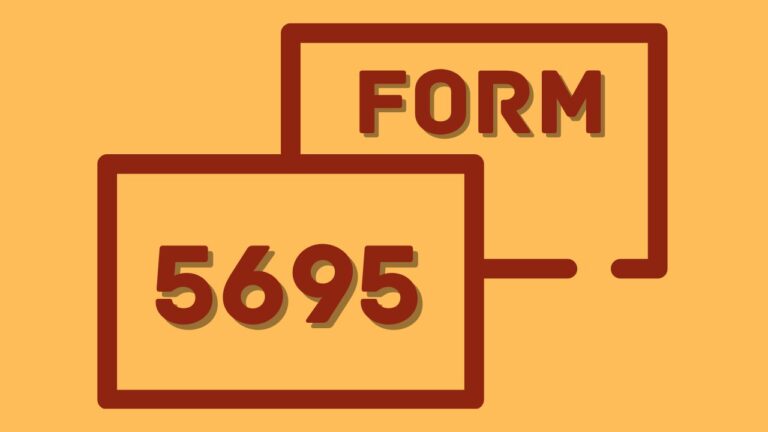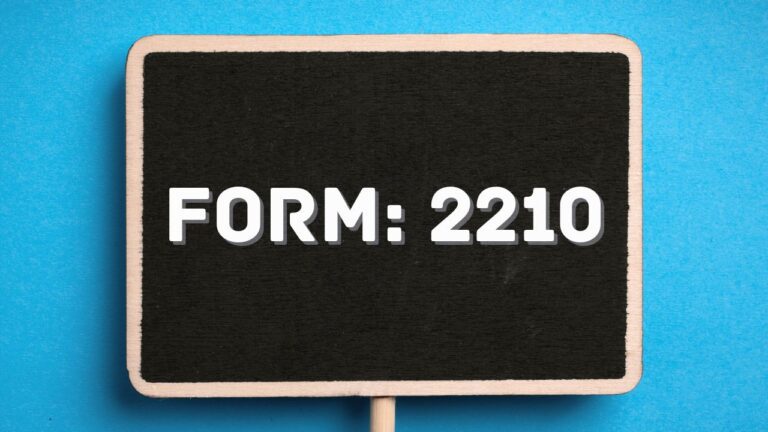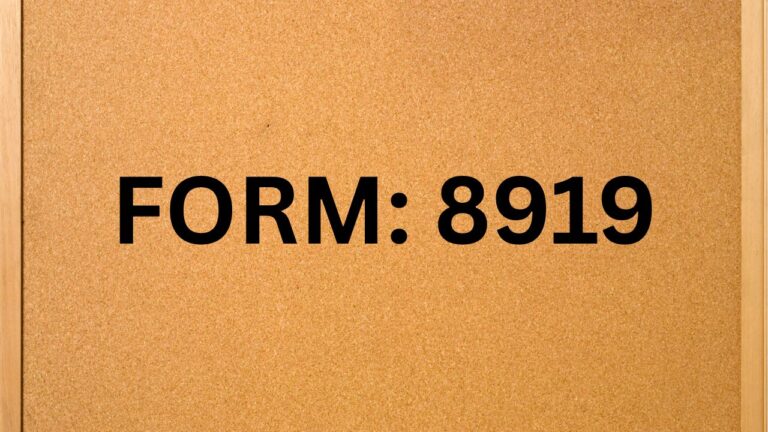Form 8959: Best Guide To Explore Additional Medicare Tax
Table of Contents
Unlocking The Detailed Overview On Form 8959

IRS Form 8959, titled “Additional Medicare Tax”, is used by individuals to calculate and report the extra 0.9% Medicare surtax that applies to higher-income taxpayers. Form 8959 is used to correctly report the Additional Medicare Tax on wages, self-employment income, and RRTA compensation that exceed the IRS income limits for your filing status.
Even though employers are required to begin withholding the Additional Medicare Tax once your wages exceed $200,000, you as the taxpayer are ultimately responsible for correctly computing any additional amount owed—or for claiming a refund if excess tax was withheld.
Why Was the Additional Medicare Tax Introduced?
The Additional Medicare Tax was introduced as part of the Affordable Care Act (ACA), effective beginning in 2013, to strengthen funding for the Medicare system. Unlike the regular Medicare tax (which is shared by both the employer and employee), this 0.9% surtax is levied only on the employee and only on earnings above a certain threshold.
Who Is Required to File IRS Form 8959?
Form 8959 must be filed if you’re subject to the Additional Medicare Tax or need to reconcile your Medicare wages and the tax withheld.. This form is not optional when the tax applies—it’s a requirement to ensure the proper reporting and calculation of the 0.9% surtax on income that exceeds certain thresholds. Here are the situations that require you to file Form 8959:
1. Your Income Exceeds the Threshold for Your Filing Status
Form 8959 must be filed when your wages, compensation, or self-employment earnings exceed the IRS income limit for your filing category.:
- $200,000 – Single, Head of Household, or Qualifying Widow(er)
- $250,000 – Married Filing Jointly
- $125,000 – Married Filing Separately
For example, if you’re single and earn $220,000 in wages in 2025, the $20,000 excess is subject to the 0.9% Additional Medicare Tax, and you must file Form 8959.
2. You Had Excess Withholding Due to Multiple Employers
If you worked for multiple employers during the year and your combined wages exceeded $200,000 (even if no single employer paid you more than $200,000), you may not have had the correct amount of Additional Medicare Tax withheld. Filing Form 8959 allows you to calculate the proper amount owed or claim a refund if you overpaid.
3. You’re Married Filing Jointly With Combined Income Over $250,000
Even if neither spouse individually earns over $200,000, their combined income may exceed $250,000, which triggers the tax liability. Employers only begin withholding at $200,000 per employee—so unless one person crosses that mark, withholding may fall short, and you must file Form 8959 to settle the difference.
4. You Had Railroad Retirement Tax Act (RRTA) Compensation
Form 8959 also applies if you received RRTA compensation, and your earnings exceeded the applicable income threshold. You must compute whether any excess RRTA compensation is subject to the Additional Medicare Tax.
5. You Have Net Self-Employment Income
If you’re self-employed, and your net earnings from self-employment—alone or combined with other wages—exceed the threshold, you’re liable for the Additional Medicare Tax and must file Form 8959 to report it accurately.
Summary
You are required to file Form 8959 if:
- You owe Additional Medicare Tax on wages or SE income above your filing status threshold.
- You had more or less than the required amount withheld.
- You want to claim a refund for overpaid Medicare tax.
- You have a filing situation that includes multiple jobs, dual-income households, or RRTA compensation.
Failing to file this form when required may result in underreporting penalties and delayed refunds.
Thresholds for Additional Medicare Tax – Explained
The Additional Medicare Tax is a 0.9% surtax applied to earned income above specific thresholds. These thresholds vary depending on your filing status and do not adjust annually for inflation. Understanding where these thresholds lie is crucial for determining whether you are liable for this tax and whether IRS Form 8959 must be filed.
Key Concept
The tax only applies to the portion of combined wages, compensation, or self-employment income that exceeds the designated threshold. Importantly, this surtax is paid only by the employee or self-employed individual—not by employers—and is in addition to the standard 1.45% Medicare tax.
2025 Filing Status Thresholds
| Filing Status | Threshold for Additional Medicare Tax |
| Single | $200,000 |
| Head of Household | $200,000 |
| Qualifying Widow(er) | $200,000 |
| Married Filing Jointly | $250,000 (combined income) |
| Married Filing Separately | $125,000 |
Form 8959 Examples
1. Wages Exceeding the Threshold – Single Filer
Scenario:
Emma is single and earns $240,000 in W-2 wages in 2025.
Calculation:
- Threshold for single: $200,000
- Excess wages: $240,000 – $200,000 = $40,000
- Additional Medicare Tax: $40,000 × 0.9% = $360
Form 8959 Reporting:
- Line 1: $240,000 wages
- Line 3: $40,000 excess
- Line 18: $360 tax
- Reported on Schedule 2 → Form 1040
2. Married Filing Jointly – Combined Wages
Scenario:
John earns $150,000 and his spouse Mary earns $130,000 in W-2 wages. They file Married Filing Jointly.
Combined Wages: $150,000 + $130,000 = $280,000
Threshold for MFJ: $250,000
Excess: $280,000 – $250,000 = $30,000
Additional Medicare Tax: $30,000 × 0.9% = $270
Important Note:
Even if neither spouse crosses $200,000 alone, they still owe Additional Medicare Tax jointly.
3. Multiple Jobs – Over-Withholding Scenario
Scenario:
James has two W-2 jobs:
- Job A pays $160,000
- Job B pays $100,000
He is single.
Employer Withholding:
- Job A does NOT withhold Additional Medicare Tax (under $200,000)
- Job B also does NOT withhold
- Total: $260,000 → $60,000 over the threshold
Tax Due:
$60,000 × 0.9% = $540
Action:
James calculates and reports this on Form 8959. He may owe tax even if no employer withheld it.
4. Excess Withholding – Refund Claim
Scenario:
Sophia is single, working two jobs.
- Job 1: $180,000
- Job 2: $100,000
Her employers both assumed they were the only employer and withheld the Additional Medicare Tax:
- Job 1 withheld $0 (under $200,000)
- Job 2 withheld 0.9% on full $100,000 = $900
Actual Threshold Breach:
- Total: $280,000
- Excess: $80,000
- Owed Tax: $720
- Withheld: $900
- Refund due: $900 – $720 = $180
Sophia reports this on Form 8959 and gets a refund on her 1040.
5. Self-Employment Income – Single Taxpayer
Scenario:
Michael is self-employed and reports $230,000 in net self-employment income.
Threshold: $200,000
Excess: $30,000
Tax: $30,000 × 0.9% = $270
Michael reports the Additional Medicare Tax on Form 8959, then carries it to Schedule 2 and Form 1040. This is separate from the regular 2.9% Medicare tax reported on Schedule SE.
6. Self-Employment Income – Married Filing Separately
Scenario:
Priya files Married Filing Separately and earns $150,000 from her business.
Threshold: $125,000
Excess: $25,000
Tax: $25,000 × 0.9% = $225
Priya reports this through Form 8959 even though she files separately from her spouse.
7. Unequal Withholding – High-Earning Couple
Scenario:
Spouse 1 earns $220,000
Spouse 2 earns $40,000
Married Filing Jointly
Combined income = $260,000
Threshold = $250,000
Excess = $10,000
Tax = $10,000 × 0.9% = $90
Only Spouse 1’s employer withheld tax on $20,000 (assumed excess), totaling $180. The couple actually owes only $90 → they claim a $90 refund.
8. High-Income Employee and Side Business
Scenario:
Olivia earns $190,000 in wages and $30,000 from a freelance business (Schedule C). She is single.
Combined earned income: $190,000 + $30,000 = $220,000
Excess = $20,000
Tax = $180 (0.9% of $20,000)
Note: Wages and self-employment income are combined for threshold calculations on Form 8959.
Special Note About Withholding
Once an employee’s wages surpass $200,000, employers must start withholding the Additional Medicare Tax—regardless of the employee’s filing status. This may lead to:
- Over-withholding (e.g., married filing jointly with total income under $250,000)
- Under-withholding (e.g., two jobs each paying under $200,000 but combined exceeding the threshold)
You must file Form 8959 to reconcile any underpayment or overpayment of the Additional Medicare Tax based on your total income.
Income Types That Trigger the Additional Medicare Tax
The Additional Medicare Tax applies to certain types of earned income—specifically wages, compensation, and net self-employment income that exceed IRS-defined thresholds based on your filing status. This tax is not applied to all income—only to particular earned income categories that directly relate to your labor or business activity.
Let’s break down the types of income that are subject to this surtax:
1. Wages (Form W-2)
Wages reported on Form W-2 that go beyond the IRS income threshold are subject to the 0.9% Additional Medicare Tax:
- Base salary and hourly wages
- Bonuses, overtime pay
- Commissions
- Tips (if subject to Medicare tax)
Example:
If you’re single and earn $210,000 in W-2 wages, the $10,000 above the $200,000 threshold is subject to the 0.9% surtax.
2. Self-Employment Income (Schedule SE)
Net earnings from self-employment that surpass the threshold for your filing status are subject to the tax. This includes income from:
- Freelance work
- Sole proprietorships
- Independent contracting
- Partnerships (where the partner is subject to SE tax)
Self-employed individuals must calculate the Additional Medicare Tax on top of their regular 15.3% SE tax and report it on Form 8959.
3. Railroad Retirement Tax Act (RRTA) Compensation
If you are covered by RRTA (e.g., as a railroad employee), your RRTA compensation exceeding the threshold is also subject to the Additional Medicare Tax. RRTA compensation works similarly to wages but under a different tax system, and it must be reported separately on Form 8959, Part III.
Income NOT Subject to the Additional Medicare Tax
The following types of income are excluded from the Additional Medicare Tax:
- Capital gains
- Dividends and interest
- Pensions and annuities
- Rental income (unless subject to SE tax)
- Social Security benefits
- IRA and 401(k) distributions (unless earned as wages)
However, these types of income may be subject to the Net Investment Income Tax (NIIT) under a separate 3.8% tax rule, not the Additional Medicare Tax.
Summary
| Subject to Additional Medicare Tax | Not Subject |
| Wages over threshold | Capital gains |
| Net self-employment income | Interest/dividends |
| RRTA compensation | Rental income |
| Taxable tips | Pensions & IRAs |
| Deferred comp (if Medicare-taxed) | Social Security |
Understanding which income is subject to this tax helps ensure accurate calculation, proper withholding, and compliance through Form 8959 filing.
How Is the Additional Medicare Tax Calculated?
The Additional Medicare Tax is a 0.9% surtax introduced under the Affordable Care Act. It applies to earned income (such as wages or self-employment income) that exceeds specific threshold amounts based on your tax filing status. The tax is calculated only on the income exceeding the threshold, and not on the total income. This tax is separate from and in addition to the standard Medicare tax of 1.45% (or 2.9% for self-employed individuals)
Step-by-Step Calculation Guide:
Step 1: Identify Your Filing Status Threshold
Each filing status has a fixed threshold for Additional Medicare Tax. These thresholds are not indexed for inflation and remain unchanged unless the law is updated.
Step 2: Add All Medicare-Taxable Earned Income
Total all earned income that is subject to Medicare taxation. This includes:
- Wages (reported on Form W-2, Box 5)
- Salaries, bonuses, and commissions
- Self-employment net earnings (reported on Schedule SE)
- Taxable tips
- Deferred compensation (if subject to Medicare tax)
- RRTA compensation (for railroad employees)
Note: Investment income, capital gains, rental income, and retirement income are not subject to this tax, though they may be subject to Net Investment Income Tax (NIIT) instead.
Step 3: Subtract the Threshold from Total Income
Only the portion of income exceeding the threshold is subject to the 0.9% Additional Medicare Tax.
Excess Income = Total Earned Income − Threshold
If the result is zero or negative, you do not owe Additional Medicare Tax. If it’s positive, that amount is subject to the 0.9% tax.
Step 4: Apply the 0.9% Tax Rate
Additional Medicare Tax Owed = Excess Income × 0.009
This is the amount you will either have withheld through payroll (if you’re an employee) or report and pay on your tax return using Form 8959.
Example scenario
Example 1: Single Filer with Wages
- Total W-2 wages = $225,000
- Threshold = $200,000
- Excess = $25,000
- Tax = $25,000 × 0.009 = $225
Example 2: Married Filing Jointly
- Spouse A earns $160,000, Spouse B earns $110,000
- Combined = $270,000
- Threshold = $250,000
- Excess = $20,000
- Tax = $20,000 × 0.009 = $180
Example 3: Self-Employed (Single)
- Net earnings from Schedule C = $240,000
- Threshold = $200,000
- Excess = $40,000
- Tax = $40,000 × 0.009 = $360
Key Considerations for Calculating the Tax
- Employer Withholding:
Employers are required to withhold the Additional Medicare Tax on wages over $200,000, regardless of your marital status or expected filing status. This means some people will have too much withheld, while others (especially married couples with two earners) may have too little withheld. - Multiple Jobs or Employers:
If you work for more than one employer and each pays less than $200,000, no employer will withhold the tax—but your total income might exceed the threshold, meaning you still owe the tax when you file. - Form 8959 Requirement:
If you’re liable for the tax—even if some was withheld—you must file Form 8959 to report and reconcile the tax amount.
Where to Report IRS Form 8959 on Your Tax Forms
IRS Form 8959 is specifically used to calculate the Additional Medicare Tax owed on wages, self-employment income, and other compensation exceeding certain thresholds. Filling out Form 8959 is just one step; you must also ensure the tax is properly reported on your individual return. You must also know where to report the final amount from this form on your main tax return.
1. Form 1040 (U.S. Individual Income Tax Return)
If you are an individual taxpayer, you’ll typically report the total Additional Medicare Tax from Form 8959 on Form 1040, specifically:
- The amount from Form 8959 should be carried over to Line 23 of Form 1040 for tax year 2024 (and is expected to remain the same for 2025).
- Labeled ‘Additional Medicare Tax from Form 8959,’ this entry appears in the ‘Other Taxes’ section of Schedule 2.
2. Schedule 2 (Form 1040)
In more detail:
- Schedule 2, Part II (Other Taxes)
- The amount from Line 18 of Form 8959 is entered on Line 11 of Schedule 2, reflecting your Additional Medicare Tax liability..
- This amount then flows into Line 23 of Form 1040 as part of your total “Other Taxes.”
Note: If you are using tax software, this flow happens automatically when you complete Form 8959.
3. Self-Employed Individuals (Schedule SE & Form 8959)
If you’re self-employed, your net self-employment income is considered when calculating the Additional Medicare Tax on Form 8959, but you do NOT include it directly on Schedule SE. Instead:
- You report your self-employment income on Schedule SE
- But calculate the 0.9% Additional Medicare Tax due (if applicable) separately on Form 8959
- Then, transfer that total tax to Schedule 2 → Line 11 → Form 1040, Line 23
4. W-2 Employees with Over-Withheld Medicare Tax
If you’re an employee and your employer withheld more Additional Medicare Tax than required (for example, due to multiple jobs), the excess is calculated on Form 8959 and reported on:
- Form 1040, Line 25c (“Federal income tax withheld from Forms W-2 and 1099”)
Any overpayment is applied to reduce your total tax due or increase your refund.
Example:
- A single filer earns $250,000 in wages.
- The threshold is $200,000, so $50,000 is subject to the 0.9% Additional Medicare Tax = $450
- The taxpayer completes Form 8959 → Line 18 = $450
- This tax is first entered on Line 11 of Schedule 2 and then carried over to Line 23 of Form 1040.
Summary
| Form | Line to Report | Purpose |
| Form 8959 | Line 18 | Calculates Additional Medicare Tax |
| Schedule 2 (1040) | Line 11 | Transfers the tax to main return |
| Form 1040 | Line 23 | Includes it in total tax owed |
Conclusion on IRS Form 8959
IRS Form 8959 plays a critical role in ensuring high-income earners accurately report and pay the Additional Medicare Tax. If your combined wages or self-employment income exceed the IRS thresholds, this form helps calculate the 0.9% tax owed on the excess. While employers may withhold part of this tax, it’s the taxpayer’s responsibility to ensure the correct amount is reported and paid. Filing Form 8959 accurately helps prevent underpayment penalties, ensures IRS compliance, and promotes a smooth tax filing process. Always review thresholds, income types, and reporting lines to avoid errors and potential audits.
Frequently Asked Questions (FAQs)
What is Form 8959 used for?
Form 8959 is used to calculate and report the Additional Medicare Tax on wages and self-employment income that exceed IRS thresholds.
Who must file Form 8959?
You must file it if your income exceeds the threshold:
-$200,000 (Single/HOH),
-$250,000 (Married Filing Jointly), or
-$125,000 (Married Filing Separately).
What is the Additional Medicare Tax rate?
It is 0.9% on wages or self-employment income above the threshold.
Is employer withholding enough for this tax?
Not always. Employers begin withholding the Additional Medicare Tax once an employee’s wages exceed $200,000, no matter the employee’s filing status..
Where do I report Form 8959?
The total tax (line 18 of Form 8959) goes on Schedule 2 (Line 11) and then to Form 1040 (Line 23).
Does it apply to investment income?
No, That’s subject to the Net Investment Income Tax (NIIT), reported on Form 8960, not 8959.







